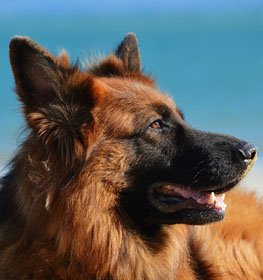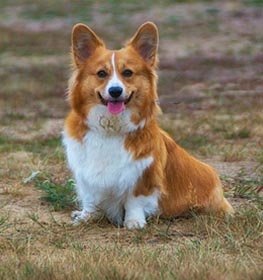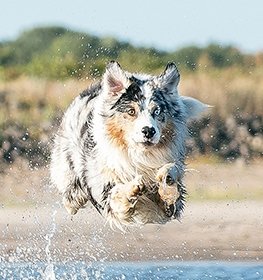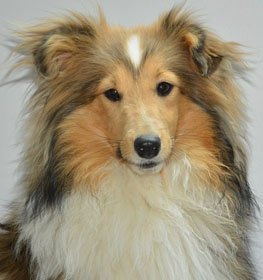Pyrenean Shepherd Information & Dog Breed Facts
Collection of all the general dog breed info about Pyrenean Shepherd so you can get to know the breed more.
| Group | Pastoral / Herding Dogs |
|---|---|
| Popularity Rank | 180 |
| Reviews | 2 |
| User Ratings | |
|
Compare the Pyrenean Shepherd With Other Dogs
Select at least one dog breed to make the comparsion. | |
 | |
| Origin | |
|
Common Names & Aliases
What other names is a Pyrenean Shepherd known by? Discover all traditional, regional and informal names used for this breed. | Petit BergerPyr ShepPyrenees SheepdogBerger Des Pyrénées |
|---|---|
|
Breed Classification
What type of dog breed is a Pyrenean Shepherd? Learn about its genetic classification and breeding category. | Purebred |
|
Size Classification
What size category is a Pyrenean Shepherd? Learn how big the Pyrenean Shepherd breed typically grows. | Medium |
|---|---|
|
Weight Statistics
How much does a Pyrenean Shepherd weigh? Discover typical weight ranges for adult males and females of the Pyrenean Shepherd breed. | 15–32 pounds (7–15 kg) |
|
Average Weight
What is the average weight of a Pyrenean Shepherd? | 15–32 pounds (7–15 kg) |
|
Height
How tall is the Pyrenean Shepherd? Pyrenean Shepherd height: | 15.5-18.5 inches (39-47 cm) |
|
Average Height
What is the average height of a Pyrenean Shepherd? | 15.5-18.5 inches (43 cm) |
|
Price Range
How much does a Pyrenean Shepherd puppy cost? Find current market prices and factors affecting Pyrenean Shepherd costs. | $500-$800 If you choose to purchase the Pyrenean Shepherd, you should know that the mentioned amount of money is an average of the collected data from breeders’ sites and puppy finder places. If you have a Pyrenean Shepherd for sale, please advertise it on a reliable website to make sure the Pyrenean Shepherd gets to a happy place. |
|---|---|
|
Availability
How easy is it to get a Pyrenean Shepherd? How many Pyrenean Shepherd are there in the world? | Frequent: The Pyrenean Shepherd is easier than average to get. Maybe there is some risk of overbreeding, as it is a popular breed. Due to its popularity, inbreeding may occur. A new study shows that inbreeding contributes to the incidence of disease and health problems. So be careful and seek the help of an experienced person or a professional, in making your decision. |
|
Intelligence Rating
How intelligent is a Pyrenean Shepherd? Discover the Pyrenean Shepherd's intelligence ranking and learning capabilities. | Low to average: This canine intelligence is not the brightest one. Keep in mind that if you want to teach them any tricks, they understand and memorize new commands in 40-80 repetitions. Pyrenean Shepherd obey the first command 30% of the time or better. So if you want to have a smart dog, you might have to reconsider your choice with this breed.
The Pyrenean Shepherd ranks below average in the intelligence ranking of dogs. |
|---|---|
|
Training Difficulty
How easy is it to train a Pyrenean Shepherd? Learn about the Pyrenean Shepherd's trainability and response to training methods. | Pyrenean Shepherd dogs are quite easy to train. Sometimes they can be challenging, but if you're consistent in teaching new commands they will obey for sure. |
|
Watchdog Rating
How good is a Pyrenean Shepherd as a watchdog? Learn about the Pyrenean Shepherd's alertness and guarding instincts. | Pyrenean Shepherd dogs are good watchdogs. Their main job is to observe and they're consistent in their effort. Good vocal cords and a sense of hearing belong to them. Usually, they're territorial and protective about their property, so the Pyrenean Shepherd dogs will alert you if they sense something different.
|
|
Territorial Protection
Is a Pyrenean Shepherd protective of its territory? Learn about the Pyrenean Shepherd's guarding instincts and behavior. | Pyrenean Shepherd dogs are extremely protective guard dogs. This breed doesn't hesitate to protect its territory so the Pyrenean Shepherd can be a good choice if you want an excellent guard dog. Keep calm and the Pyrenean Shepherd will take care of unwanted people or animals. |
|
Personality Traits
What personality does a Pyrenean Shepherd have? Learn about characteristic Pyrenean Shepherd temperament and behavior traits. | EnergeticTrainableWatchfulCleverDedicatedBossy |
|---|---|
|
Sensitivity Level
How sensitive are they? Pyrenean Shepherd sensitivity: | They are a little bit more sensitive than other dog breeds. Soft punishment affects them emotionally. Pyrenean Shepherd dogs don't tolerate irregular daily routines, noisy households, and frequent guest visits really well.
They are receptive to their owner's emotions and make wonderful family companions. |
|
Affection Level
How affectionate are they? Is a Pyrenean Shepherd a good family dog? | High: Pyrenean Shepherd dogs are genuinely loyal, soft and gentle, loving, and affectionate dogs toward their handlers. They enjoy quality time with their owners despite the activity and are considered great therapy dogs for those in need. This breed responds strongly to their handler's emotions because they bond closely. Their happiness is your happiness. |
|
Social Needs
How much social interaction does the Petit Berger need? Pyrenean Shepherd social needs: | Pyrenean Shepherd dogs need for social interaction is average. This breed likes being around people or other animals, but they don't mind being left alone for a few hours either. |
|
Impulse to Wander or Roam
How likely is the Pyrenean Shepherd to run away? Does this breed explore or wander a lot? Does Pyrenean Shepherd roam? | Pyrenean Shepherd dogs tend to escape less than other breeds. They have low to average wanderlust potential. Exploring the world is not the best activity they can imagine. |
|
Prey Drive
Do this canine have a strong prey drive? Does Pyrenean Shepherd have high prey drive? | Pyrenean Shepherd dogs have a higher impulse to chase and catch something than other dog breeds. Cats or any other small animals might be in danger. It's a natural instinct, doesn't necessarily mean that Pyrenean Shepherd dogs are aggressive. Better to keep this breed on a leash. |
|
Barking Frequency
Does a Pyrenean Shepherd bark a lot? Learn about typical Pyrenean Shepherd vocalization patterns and triggers. | A lot: Pyrenean Shepherd is a particularly loud breed. They often enjoy barking and howling loudly. If you want a quiet dog, not the best choice.
The main triggers for barking are fear, attention, alarm, boredom, greeting, separation anxiety, compulsive barking, and defense. |
|---|---|
|
Playful Nature
How playful is a Pyrenean Shepherd? Understand the typical play drive and energy level of the Pyrenean Shepherd breed. | The Pyrenean Shepherd is a playful breed. Excited barking and sometimes nipping will alert you to play. |
|
Apartment Adaptability
Can a Pyrenean Shepherd live in an apartment? Learn about the Pyrenean Shepherd's suitability for apartment living. | Apartment-friendly dog the Pyrenean Shepherd breed. It is best if you have a small garden where it can occasionally go out to do its business, but this is not important at all. You can exercise him enough with a walk or two a day, so he's comfortable in an apartment. |
|
Lifestyle Adaptability
How adaptable is a Pyrenean Shepherd to lifestyle changes? Learn about the Pyrenean Shepherd's flexibility to new situations. | Pyrenean Shepherd dogs don't adapt well to lifestyle changes and different living environments. They don't like moving from one place to another. |
|---|---|
|
Alone Time Tolerance
Can a Pyrenean Shepherd be left alone? Learn about the Pyrenean Shepherd's tolerance to solitude. | Just like every puppy, they are prone to panic, cry, bark, whine when they left alone by their owner. With proper socialization and quality time with the dog can solve this problem. |
|
Bite Risk Assessment
What is a Pyrenean Shepherd biting potential? Learn about the Pyrenean Shepherd's bite risk factors. | Low 🔽 The Pyrenean Shepherd has a low chance of biting somebody. Top reasons for dog bite: protection, pain, excitement, herding instinct, being provoked. (Data based on the available online bite statistics.) |
|---|---|
|
Mouthing Tendency
Is a Pyrenean Shepherd mouthy? Learn about the Pyrenean Shepherd's tendency to use mouth during play. | Pyrenean Shepherd dogs have an average tendency to nip, chew, playbite, or herd people. It's a common habit during puppyhood, not aggressive behavior. These "bites" don't hurt, but Pyrenean Shepherd dogs need to be taught a good attitude. |
|
Bite Strength Rating
How strong is a Pyrenean Shepherd bite? Learn about the Pyrenean Shepherd's bite force measured in PSI. | Between 200 and 400 PSI ⏺ Pyrenean Shepherd bite force: Ordinary. Bite force Pyrenean Shepherd measurements typically fall within the range of 200 to 400 PSI. The bite force of a Pyrenean Shepherd is considered ordinary when compared to other dog breeds, but it is still quite powerful. This Pyrenean Shepherd bite force PSI can cause bite wounds. Pyrenean Shepherd bite PSI is not something that should be feared if the dog is well-trained and managed. To avoid any issues, it's essential to learn how to train a Pyrenean Shepherd puppy not to bite from an early age.
The Pyrenean Shepherd, and many others, have a fearsome presence because they have significant jaw strength, so it is important not to anger the dog and have it around strangers until it is fully trained. However, they are usually quite calm and good companions, they work well in families and are easy to care for. In conclusion, while the Pyrenean Shepherd bite force is certainly an interesting aspect of the breed, it is important not to let it overshadow the many other reasons why these dogs are so loved and respected. With proper training and socialization, a Pyrenean Shepherd can be a loyal and protective companion for your family. |
|
Average Lifespan
How long does a Pyrenean Shepherd live? Learn about the typical lifespan of the Pyrenean Shepherd breed. | 15-17 years The average lifespan of Pyrenean Shepherd: 16 years |
|---|---|
|
Climate Tolerance
How well does a Pyrenean Shepherd handle different weather? Learn about the Pyrenean Shepherd's climate adaptability. | Prefers average to cold weather conditions The Pyrenean Shepherd can adapt to well to cold weather conditions, some dogs even can be a good mountain dog. |
|
Health Concerns
What health issues are common in a Pyrenean Shepherd? Discover typical conditions affecting the Pyrenean Shepherd breed. | Pyrenean Shepherds tend to have more frequent health issues than other breeds. Regular vet check-ups are needed.
|
|
Vet Care Frequency
How often does a Pyrenean Shepherd need vet visits? Learn about the Pyrenean Shepherd's veterinary care requirements. | Frequent The Pyrenean Shepherd should have a complete physical check-up at least once (but preferably twice) per year. If your dog shows any symptoms, call your veterinarian. |
|
Health Problems
What genetic/health problems does the Pyrenean Shepherd breed have? What are the health issues and concerns of the Pyrenean Shepherd breed? Most common health risks of Pyrenean Shepherd: | Hip Dysplasia Patellar LuxationPatent Ductus ArteriosisProgressive retinal atrophy (PRA)Epilepsy |
|
Energy Rating
How energetic is a Pyrenean Shepherd? Understand daily activity needs of the Pyrenean Shepherd breed. | Pyrenean Shepherd dogs have a higher energy level than other dog breeds. If you want a dog for snuggling on the couch, this breed isn't the perfect choice for you. |
|---|---|
|
Activity Requirement / Exercise Need
How much exercise does a Pyrenean Shepherd need? How much exercise do Pyrenean Shepherd dogs require per day?
Do Pyrenean Shepherd dogs need a lot of exercises? | Pyrenean Shepherd dogs need a lot of exercises. Long walks should be on a daily schedule. If you live an active life, this breed can be a good choice for you. |
|
Sleeping Need
How much sleep does the Pyrenean Shepherd breed need? | Pyrenean Shepherd dogs are quite energetic dogs and they don't spend too much time with sleeping. If you live an active life, this breed can be a good choice for you. |
|
Obesity Tendency
Is a Pyrenean Shepherd prone to weight gain? Learn about the Pyrenean Shepherd's obesity risks. | Average: The Pyrenean Shepherd has an average risk for obesity. Daily walks should be on schedule. To make your dog happy and fit, feed him with quality dry dog food and live an active life together. Try to find the happy medium between exercise and feeding.
If you notice any weight gain, consult your veterinarian and make a diet plan. Reduce unhealthy food and snacks, and measure the Pyrenean Shepherd weight regularly. |
|---|---|
|
Food Consumption
How much food does a Pyrenean Shepherd need daily? Learn about the Pyrenean Shepherd's feeding requirements. | 1 to 1.5 cups of high-quality dry food a day, divided into two meals. |
|
Allergy Friendliness
Is a Pyrenean Shepherd hypoallergenic? Learn about the Pyrenean Shepherd's suitability for allergy sufferers. | No Pyrenean Shepherd dogs don't do well with allergy sufferers by causing allergic reactions. Some dog breeds are even considered to higher possibility of an allergic response. Coat type isn't necessarily relevant, because most people are allergic to dander (flakes on the dog's skin) or saliva, not actually to dog hair. |
|---|---|
|
Coat Colors
What colors does a Pyrenean Shepherd come in? Discover all possible Pyrenean Shepherd color variations. | BlackGray White Fawn Brindle |
|
Grooming Requirements
How much grooming does a Pyrenean Shepherd need? Learn about Pyrenean Shepherd coat maintenance requirements. | Average: The Pyrenean Shepherd requires average grooming effort. Cutting the dog's hair by a professional groomer isn't essential. Brushing the dog's coat is useful to reduce shedding. Ears and eyes should be cleaned regularly to avoid infections. Don't skip the seasonal flea treatment too. Dog nail trimming and dog bath can be helpful sometimes. Check the local pet store for dog grooming supplies and find the best dog shampoo to keep its coat healthy and give your dog a pleasant experience of a dog bath. If you don't have the time, skill, or money to take care of your Pyrenean Shepherd, search for a dog groomer or clipping service in your area and book an appointment. Maybe you're lucky to have a dog boarding service that includes grooming or walk-in dog bath places nearby. |
|
Drooling Tendency
Does a Pyrenean Shepherd drool a lot? Learn about the Pyrenean Shepherd's drooling habits. | The Pyrenean Shepherd is a perfect example of a very low drooling tendency. If you're disgusted by slobber spots on your clothes, the Pyrenean Shepherd could be a perfect choice for you. Drooling is the unintentional saliva flowing outside of the mouth. It can be completely normal or a sign of a health problem. Certain dog breeds drool minimum compared to others, just like the Pyrenean Shepherd.
If you notice any change in your dog's drooling habit, you should contact a vet as soon as possible. |
|
Stinkiness Rating
Does a Pyrenean Shepherd smell bad? Learn about the Pyrenean Shepherd's natural odor levels. | Medium ⏺ The Pyrenean Shepherd has an average chance of bad smell. Top reasons for dog stinkiness: infection of bad tooth/ear/skin folds, gas attacks. |
|
Coat Characteristics
What type of coat does a Pyrenean Shepherd have? Learn about the Pyrenean Shepherd's fur characteristics. | RoughSmooth |
|
Bathing Needs
How often does a Pyrenean Shepherd need baths? Learn about the Pyrenean Shepherd's bathing requirements. | 4-6 weeks Average. Experts recommended at least every 4-6 weeks for this family pup. According to a study, 56% of pet parents don’t bathe their dogs as frequently as they should, and 60% use the sniff test when deciding when it’s bath time.
Bathing your dog is beneficial to them in more ways than just one. It’s also a good time to look for unusual scratches, bumps, fleas, and other irregularities. When their hair is wet and flat against their body, these details are more visible. |
|
Shedding Level
How much do Pyrenean Shepherd dogs shed? How to control, reduce and prevent the shedding of the Petit Berger? Do Pyrenean Shepherd dogs shed a lot? | Pyrenean Shepherd dogs shed moderately. It's a natural process of the hair growth cycle. Regular brushing reduces the amount of hair that sheds. It mostly depends on their health status and breed type. |
|
Child Compatibility
Is a Pyrenean Shepherd good with children? Learn about the Pyrenean Shepherd's behavior around kids of different ages. | Pyrenean Shepherd dogs are kid-friendly dogs. This breed is a good choice if you have children. |
|---|---|
|
Pet Compatibility
How well does a Pyrenean Shepherd get along with other pets? Discover the Pyrenean Shepherd's compatibility with other animals. | Pyrenean Shepherd dogs are generally with other pets. |
|
Stranger Friendly
Are they aggressive or friendly towards/with strangers? Pyrenean Shepherd temperament with other people: | Pyrenean Shepherd dogs are not the most stranger-friendly dogs. |
|
Cat Friendly
How well do Pyrenean Shepherd dogs get along with cats? Are they good with kittens? What is this fido's temperament with cats? Can they be good with cats? Can the Pyrenean Shepherd breed live with a cat? | Pyrenean Shepherd dogs are average friendly towards cats. |
|
Dog Friendly
Is Pyrenean Shepherd good with other dogs? Are they dog-friendly dogs? How well do Pyrenean Shepherd dogs get along with other dogs? | Pyrenean Shepherd dogs are not the most dog-friendly dogs. If you want more dogs in your family or you'd like to join dog meetups, the Pyrenean Shepherd is not a good choice. |
|
Good For First Time Owners
Is Pyrenean Shepherd breed good for first-time owners? Do they make a good dog for novice owners? Is Pyrenean Shepherd breed suitable for first-time owners? | No Pyrenean Shepherd dogs are not good for novice owners, due to their stubborn personality. |
|
Office Friendly
Are Pyrenean Shepherd dogs good office canines? Do Pyrenean Shepherd dogs make good office-friendly pets? Can they be office dogs? | No Pyrenean Shepherd is not the best dog breed for office environment. |
|
Senior Citizens Friendly
Are they senior citizens friendly dogs? How well do Pyrenean Shepherd dogs get along with the elderly people? What is the Petit Berger temperament with senior people? Are Pyrenean Shepherd dogs good for elderly owners? | Pyrenean Shepherds are usually recommended for elderly people. |
|
Service Dog Capability
Can a Pyrenean Shepherd be a service dog? Learn about the Pyrenean Shepherd's service work potential. | Not really This breed generally not used as a service dog. A service dog is a term used in the USA to refer to any type of assistance dog specifically trained to help people who have disabilities, such as visual impairment, hearing impairments, mental disorders, seizures, mobility impairment, and diabetes. Service dogs are protected under the ADA (Americans with Disabilities Act).
Pyrenean Shepherd is not the best breed for service purposes. |
|---|---|
|
Therapy Work Suitability
Is a Pyrenean Shepherd good as a therapy dog? Learn about the Pyrenean Shepherd's therapy work aptitude. | Not really This breed is generally not used as a therapy dog. A therapy dog is a dog that might be trained to provide affection, comfort, and love to people in hospitals, retirement homes, nursing homes, schools, hospices, disaster areas, and people with anxiety disorders or autism.
Pyrenean Shepherd is not the best breed for therapeutic purposes. |
|
Scent Detection Ability
Is a Pyrenean Shepherd good at detection work? Learn about the Pyrenean Shepherd's scenting abilities. | Not really They are not typically employed for this type of work, but there may be exceptional cases. A detection dog or sniffer dog is a dog that is trained to use its senses (mostly its smell) to detect substances such as explosives, illegal drugs, wildlife scat, currency, blood, and contraband electronics such as illicit mobile phones.
Pyrenean Shepherd is not the best breed for detection purposes. |
|
Search & Rescue Potential
Can a Pyrenean Shepherd do search and rescue? Learn about the Pyrenean Shepherd's SAR capabilities. | Not really This dog breed is not typically used as a search and rescue dog. The use of dogs in search and rescue (SAR) is a valuable component in wilderness tracking, natural disasters, mass casualty events, and locating missing people.
The Pyrenean Shepherd is not the best breed for SAR purposes. |
|
Maritime Work Ability
Is a Pyrenean Shepherd good on boats? Learn about the Pyrenean Shepherd's maritime capabilities. | Not really Pyrenean Shepherd breed usually doesn't like being on a boat. Boat dogs were typically bred for their strength, stamina, and water resistance, as they were often required to perform tasks such as pulling in fishing nets, and jumping into the water to retrieve ropes or lines, or helping to move cargo. Sailor dog is a type of dog that was bred to accompany sailors on their voyages. They were typically used for three purposes: as a working dog, a watchdog, and as a companion. A boat dog is a term used to describe a type of dog that was traditionally bred and used as a working dog on boats. |
|
Draft Work Capability
Can a Pyrenean Shepherd pull carts? Learn about the Pyrenean Shepherd's drafting abilities. | Not really A drafting dog or draft dog is a dog bred and used for cart pulling. Dogs bred for this work have strong builds and qualities that are needed, strength and determination.
Pyrenean Shepherd is not the best breed for drafting purposes. |
|
Military Service Background
Was a Pyrenean Shepherd used in military service? Learn about the Pyrenean Shepherd's military history. | Not really In history, this breed was not really used for combat dog. |
|
Puppy Litter Size
How many puppies does a Pyrenean Shepherd usually have? Learn about typical litter sizes. | 4 puppies |
|---|---|
|
Pregnancy Duration
How long is a Pyrenean Shepherd pregnant? Learn about the Pyrenean Shepherd's gestation period. | 60-64 days Reproductive cycle of the female Pyrenean Shepherd: The first period called Proestrus lasts for about 9 days.
During this time the females start to attract males. You can notice by swelling vulva and bloody discharge. The second part is the Estrus when the female is receptive for the male. It lasts for about 3 to 11 days. The sign of the proestrus part is the soft and enlarged vulva. The discharge decreases and lightens in color. The third part is the Diestrus. Normally, it occurs around day 14. In this period the female’s discharge changes for vivid red and coming to its end. The vulva returns to average, and she will no longer permit mating. The fourth part called the Anestrus. The time frame between heat periods normally lasts about six months. |
|
Breeding Frequency
How often can a Pyrenean Shepherd have puppies? Learn about safe breeding intervals. | Once a year. More frequent breeding is not healthy. It is very important not to buy a dog from a puppy mill, where the needs of the pups and their mothers are ignored. It's an inhumane high-volume dog breeding facility, where puppies born several times a year. |
|
AKC Classification
What AKC group is a Pyrenean Shepherd in? Learn about the Pyrenean Shepherd's AKC classification. | Recognized by the American Kennel Club in 2009 as a Herding breed. |
|---|---|
|
FCI Classification
What FCI group is a Pyrenean Shepherd in? Learn about the Pyrenean Shepherd's international classification. | Recognized by FCI in the Sheepdogs and Cattledogs (except Swiss Cattledogs) group, in the Sheepdogs section. |
|
Kennel Club Recognition
Which kennel clubs recognize a Pyrenean Shepherd? Learn about the Pyrenean Shepherd's official recognition. | American Kennel ClubFederation Cynologique InternationaleKennel Club of Great BritainContinental Kennel ClubUnited Kennel Club |
Pyrenean Shepherd Pros and Cons
- Apartment Adaptability: Apartment-friendly dog the Pyrenean Shepherd breed.
- Drooling Tendency: The Pyrenean Shepherd is a perfect example of a very low drooling tendency.
- Watchdog Rating: Pyrenean Shepherd dogs are good watchdogs.
- Impulse to Wander or Roam: Pyrenean Shepherd dogs tend to escape less than other breeds.
- Child Compatibility: Pyrenean Shepherd dogs are kid-friendly dogs.
- Senior Citizens Friendly: Pyrenean Shepherds are usually recommended for elderly people.
- Intelligence Rating: Low to average: This canine intelligence is not the brightest one.
- Health Concerns: Pyrenean Shepherds tend to have more frequent health issues than other breeds.
- Allergy Friendliness: Pyrenean Shepherd dogs don't do well with allergy sufferers by causing allergic reactions.
- Lifestyle Adaptability: Pyrenean Shepherd dogs don't adapt well to lifestyle changes and different living environments.
- Dog Friendly: Pyrenean Shepherd dogs are not the most dog-friendly dogs.
- Office Friendly: Pyrenean Shepherd is not the best dog breed for office environment.
- Good For First Time Owners: Pyrenean Shepherd dogs are not good for novice owners, due to their stubborn personality.
Pyrenean Shepherd History
The origins of the Pyrenean Shepherd are unknown, but they have been living in the Pyrenees Mountains in Southern France for a very long time. There have been many myths about this sheep herding breed, one of which says that they descended from native Pyrenean bears and foxes. Another myth suggests that they were the dog of Cro-Mangon people who created the famous Lascaux cave paintings. While this fact is not verified, according to archaeologists, they have found bones of small dogs in Neolithic fossil deposits. The region had also been transformed through overgrazing by 6000 BC, which shows that sheep and goat herding were very well developed back at that time. Throughout the centuries, transhumance herding has been the strength of the economy of High Pyrenees and this ancient lifestyle persists even into the 21st century as many Pyrenean Shepherd still herd sheep every day in the Pyrenees Mountains. Moreover, the dogs are mentioned several times in the medieval accounts of life in the Pyrenees as a constant companion because wherever the shepherd went, his dog went too. All this evidence suggests that this breed has been around for thousands of years, where it has been used as a sheepherder who guarded the flocks. The intelligent and adaptive nature of this breed is naturally suited for herding and many times only two shepherds could manage a flock of up to 1000 sheep.
Furthermore, a very important factor in developing and maintaining this breed type throughout the centuries was that the pastoral industry relied only on two breeds, the Great Pyrenees who guarded the flocks against attacks by bears and wolfs, and the Pyrenean Shepherd who was used for herding as mentioned above. This way the dogs were protected and the smaller size was valued as they were quicker, needed less food that allowed the shepherd to keep more individual dogs, and it also meant more sheep on the market.
According to researchers, the population of Pyrenean Shepherds had always been high across centuries, but they have always focused on selective breeding to avoid any genetic defects and maintain the breed type and its working ability. This also led to the stabilization of two varieties, that are now independently bred. One of them is the Rough-Faced which has a long coat and long hairs on the face, and the other one is the Smooth-Faced variety which is less furnished and has short hair on the face. By the 19th century, a few Pyrenean Shepherds found their way to the United States to herd flocks in the west, and some people believe that they contributed to the development of the Australian Shepherds. However, the breed was still mostly unknown to other parts of the world but gained recognition during World War I for their service. Perhaps hundreds of Pyrenean Shepherds gave their life for the cause as couriers, guards, and search and rescue dogs for the French military. After the war, like in all types, the number of dogs decreased and shepherds started working to save and rebuild the breed. The ‘Reunion des Amateurs des Chiens Phyrenees’ (RACP) was founded to preserve the breed, and this remained the French parent club. These dogs began to participate in herd trials and shows, and by 1923 an accurate standard for the breed was created in France. In the 1970s and 1980s, the breed was imported into the United States in greater numbers, but it wasn’t until 2009 that it was recognized by the American Kennel Club.
Latest Pyrenean Shepherd Compares
Pyrenean Shepherd Names
How old is my Pyrenean Shepherd in human years?
You May Also Like
Rate The Pyrenean Shepherd Breed
Pyrenean Shepherd Comments, Reviews and Questions
- Mica Richard
Jul 15, 2025, 10:51:59 AM:
Best
- Hansel Jansen
Jul 15, 2025, 10:51:28 AM:
I had 5 in a studio and they were so easy to take care. Barely shed, very friendly to my 4 kids, very house friendly and super protective. The best dog EVER




